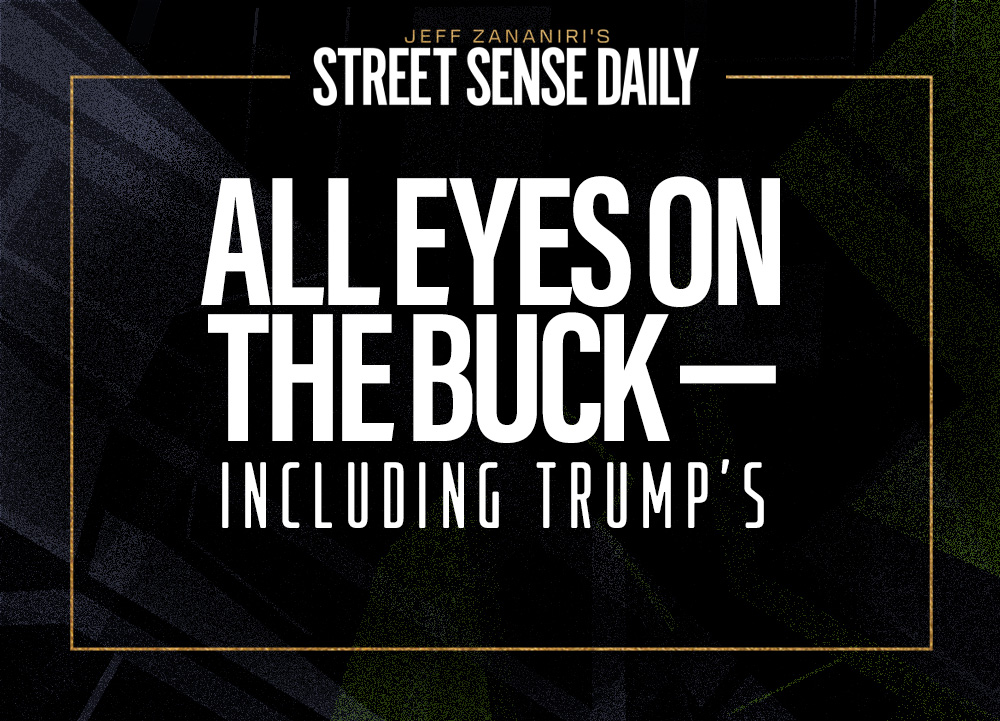Good morning, traders,
Over the first six months of this year, the U.S. dollar index (DX=F) has taken a noticeable, sustained hit.
This is the kind of move that doesn’t just affect import/export companies or tourists heading to Paris.
It’s a shift with teeth.
And President Trump, along with his team, has been watching it closely.
Now, Trump’s relationship with the dollar has always been a bit … fluid.
During his first term, he publicly bashed a strong dollar more than once, calling it a disadvantage for American manufacturers and exporters.
But behind closed doors, some of his economic advisors have historically preferred a stronger dollar to maintain America’s dominance and cool inflation.
That internal tug-of-war might be resurfacing now — only this time, the stakes are different.
Here’s the play for traders.
A Weak Dollar Could Help Trump
If Trump keeps pushing tariffs — and he’s shown no signs of backing off anytime soon — then a falling dollar actually makes those tariffs feel less painful for U.S. exporters.
A weaker dollar makes American goods cheaper overseas.
That’s a win for U.S. manufacturers and a short-term political boost in battleground states with deep industrial roots.
It also acts like a stealth tariff.
Foreign competitors already have to pay more to sell goods here, so the administration might not need to hit the same sectors with headline-grabbing duties.
That creates a little breathing room on the geopolitical front and lets Trump apply pressure more selectively.
But traders need to watch that closely.
The weaker the dollar, the more emboldened Trump may feel to lean into this strategy.
And if it works (or appears to), it could juice industrials, energy, and select tech plays tied to exports.
Fed Policy Gets More Complicated
Here’s where it gets messier.
The Federal Reserve’s stance becomes harder to maintain as the dollar continues its slide.
A weaker dollar can fuel inflation by making imports more expensive.
And while inflation has cooled, it’s not buried — not even close.
If Trump wants rate cuts to juice the economy going into the election, a falling dollar could mess with that timing.
In other words, Trump might get the weaker dollar he wants for trade and manufacturing, but at the cost of delaying rate cuts he also wants to boost the economy and markets.
That’s a squeeze.
If Trump’s team decides the dollar is falling too fast, they might pivot toward jawboning it back up — or even propose policy shifts to stabilize it.
That could mean coordinated Treasury and Fed action, which creates uncertainty for traders.
Markets hate mixed signals, and this could become a prime example.
Market Movers and What to Watch
For traders, this situation creates a clear watchlist.
Dollar-sensitive sectors like materials, energy, and industrials could benefit from continued weakness.
Tech, particularly companies that manufacture abroad and sell in the U.S., may take a hit.
Same with retailers that rely heavily on imports.
If Trump’s team signals concern about inflation or global standing, expect volatility in interest-rate sensitive names and a possible bid back into the dollar — even if the broader sentiment still favors easing.
Bottom line: Trump’s agenda and the dollar are now tied tighter than most traders think.
Whether the White House embraces the decline or fights it will steer tariffs, Fed pressure, and potentially the tone of the entire market.
Don’t wait for a headline. Read the tape, watch the greenback, and position ahead of the policy — not after.
Stay street smart,
Jeff Zananiri
P.S. Join Aaron Hunziker live at noon ET Saturday as he breaks down how he trades zero-day setups for fast, repeatable wins.
You’ll see:
- His go-to patterns
- How he controls risk on same-day trades
- Why most traders blow up — and how to avoid it
Seats are limited — don’t miss it.
*Past performance does not indicate future results



